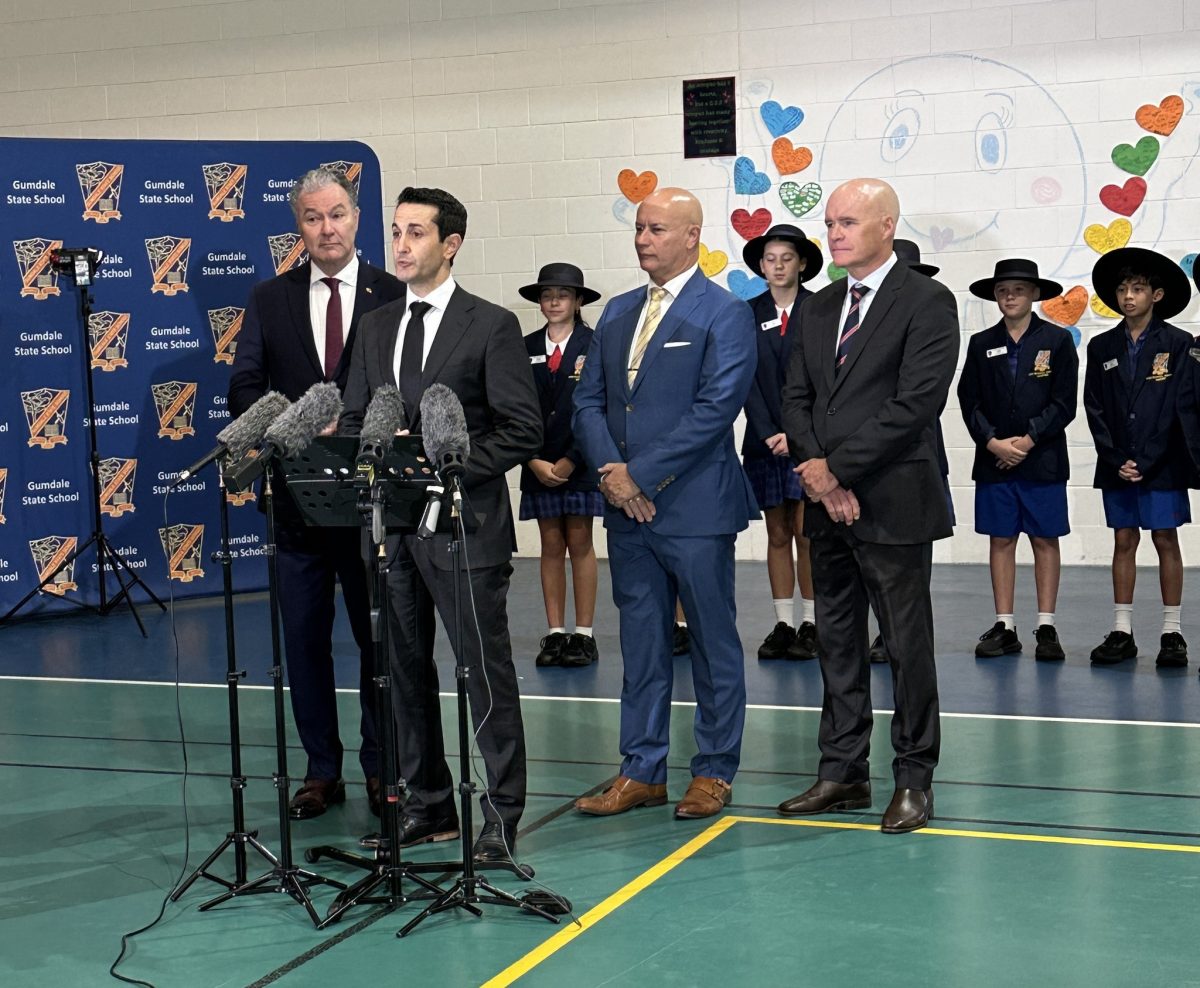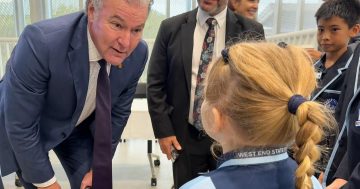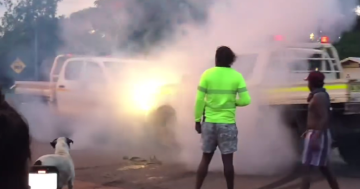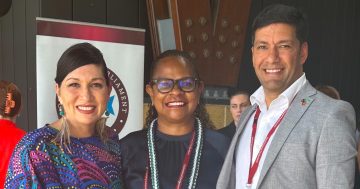
Premier David Crisafulli and Minister for Education and the Arts John-Paul Langbroek announce the State Government’s new Rapid Support Squad anti-bullying initiative, which has been slammed by a Far North Queensland principal, in Brisbane on 22 April. Photo: Facebook (Gumdale State School).
A Far North Queensland principal has slammed a new government initiative aimed at stamping out bullying in the schoolyard as nothing more than a “band-aid” solution that insults educators.
On 23 April, the State Government unveiled Rapid Support Squads, which will have the capacity to “fly into regional and remote schools, and provide on-the-ground expertise in response to a bullying incident”.
Each of Queensland’s eight education regions will have a designated squad, made up of three senior guidance officers and support staff, with a bailiwick to “strategically target bullying hotspots” as part of five new anti-bullying initiatives rolled out in a $33 million funding commitment.
The announcement comes on the back of a spate of serious incidents in schools across the state, including an alleged violent clash at a school in the Northern Peninsula Area seven weeks ago.
During the 13 March incident at the school, which cannot be named for legal reasons, a 16-year-old girl and a 17-year-old girl were left with serious injuries after being allegedly repeatedly beaten, with the 17-year-old being rushed to hospital after being punched in the head by a fist holding a rock during the alleged attack.
However, the initiative has been criticised by one principal, who spoke to Cape York Weekly on the condition of anonymity, for its reactive approach to a problem that is often long-brewing.
“By the time they (the squad) get on a plane, it’s too late,” the principal said.
“It would be preferred if this squad identify the best practices that currently exist in schools and communities, identify the consistent approaches required within every school that are evidence-based, then, support schools and communities to implement consistently, regardless of school location.”
The principal said many issues stemmed from social media, and relationships between families and community members, and questioned if simply focusing on school activity would deliver tangible results.
“This is not only happening from nine to three, this is happening largely outside, it’s just flaring at the common meeting point, the school,” they observed.
“Sometimes, it’s a community, family or peer issue that was brought into school, and the young people displayed the behaviours that they saw in community or online, and all of a sudden, it’s a black mark against the school.
“What’s the multi-agency response to this? What are the proactive strategies expected of police and other agencies, or are we just saying that educators are the only ones who can fix this, because we’re loading it all onto schools, even though that’s not often where it originates anymore.
“Putting a helicopter band-aid on a problem that is societal is not the best path.”
In communities where trust and relations are everything, the principal said they doubted outsiders would prove helpful.
“Tell me how a group of people are going to fly into a community, and somehow address the bullying issue, which is a relational breakdown between kids, and they have no relationship with them,” the principal said.
“If they’re not aware of community life, they can cause huge damage, and be run out of town as fast as they run in, especially if they’re dealing with agitated families as a result of some sort of incident.
“It’s hoped that all government and non-government agencies come together to address the issues and map a path forward; the fly-in squad could definitely have a role in that, especially if the state government place some legislative accountability on the agencies to [deliver] actions from it.”
The principal also stressed that a focus on recognising bullying, and building the emotional capacity to speak up when needed, was vital.
“It’s no longer the visible stuff, you’re not seeing it on the playground … it’s online, it’s covert, and, [often], no one’s able to pinpoint even … who the author is; it’s 24/7 and they can’t escape,” they said.
“It can go on for months and months undetected through social media, and this is where some of those tragedies have happened; no one’s aware of it until the worst happens.”
The principal said this complex issue required a multi-faceted approach, including a range of avenues to report bullying, and kids understanding the harm of their actions.
“We need to teach kids to be able to understand the impact of their actions, and that’s the bit that has been missing in these punitive consequences that are clearly not working,” they said.
“It’s about hearing from the victim, getting an understanding from the perpetrator why they did it, but understanding the harm that they’ve done, and then ideally, finding a resolution to move forward.
“It can include a consequence also, but often, if you have a look at someone, hear them, and see the pain you have caused, it has far more impact than any other consequence.”
Minister for Education and the Arts John-Paul Langbroek said despite criticism, the government would be persistent in its efforts to wipe out the “scourge on society” that is bullying.
“We’re committed to driving down the number of students impacted by bullying and responding to serious incidents with the swift action such a serious issue deserves,” he said.
“Today’s announcement is just the starting point in our fight to prevent and reduce bullying.”









